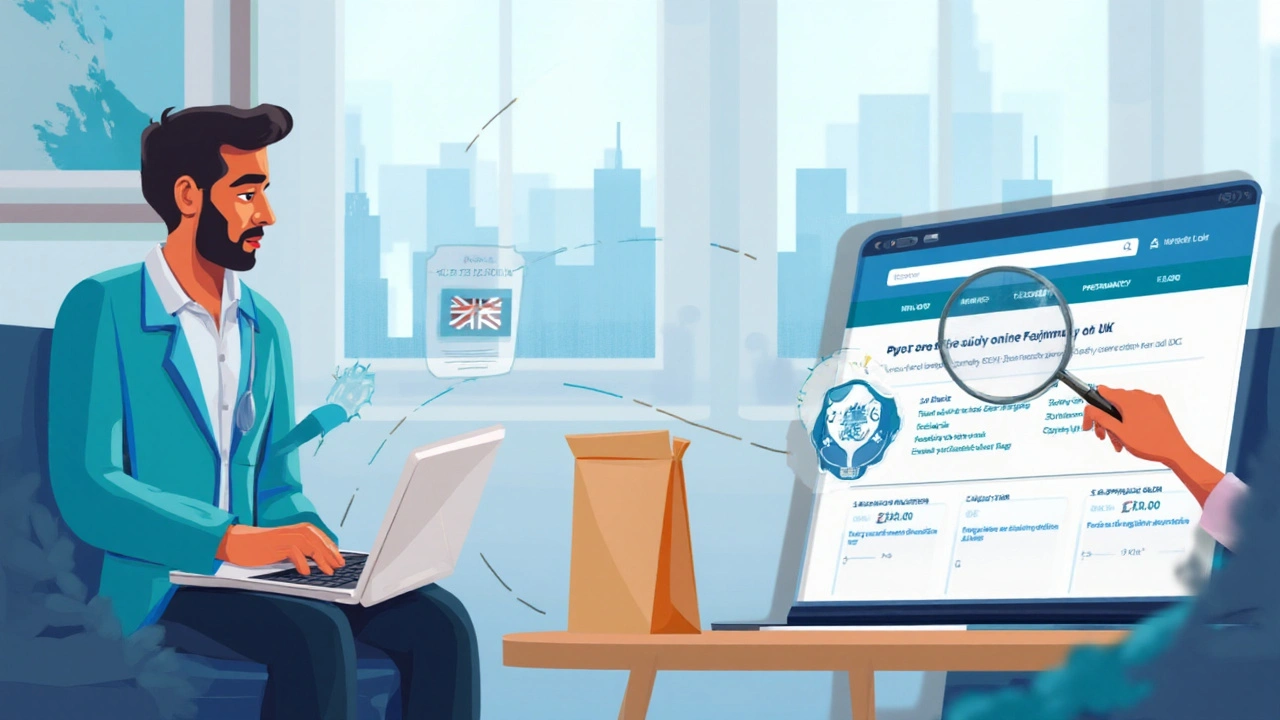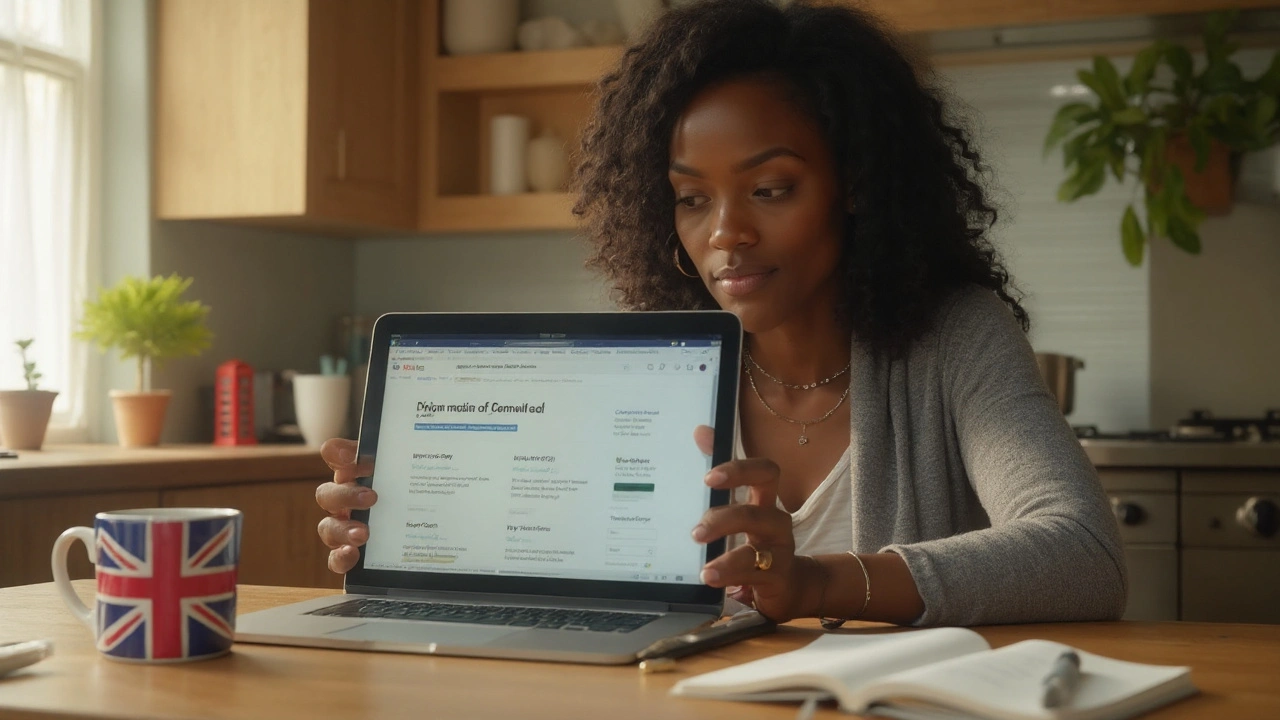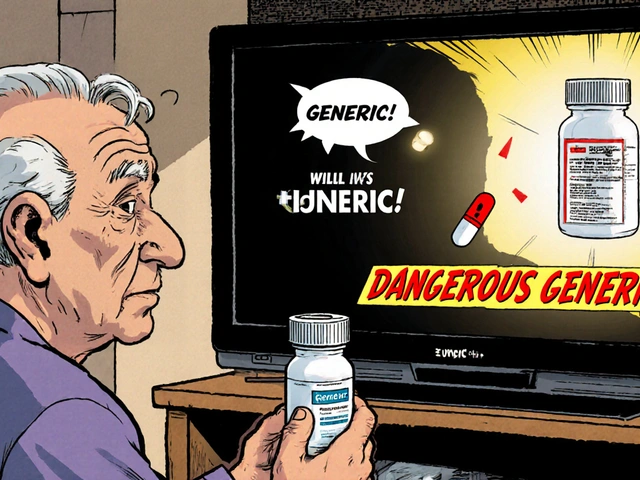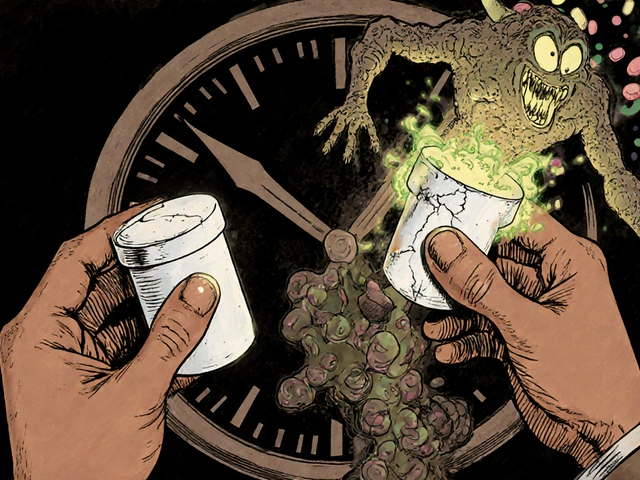Paying more than about a tenner a month for lisinopril in England? You’re probably overpaying. If you want to buy online cheap generic lisinopril, here’s the deal: you can do it safely, legally, and often for less-if you know the right routes. I live in Bristol, juggle school runs with my son Corin, and I like things easy: repeat meds sorted on the app, no surprises at checkout, and no dodgy websites. This guide is blunt about prices, shows you the safest ways to order online, and flags the traps that push costs up.
What to expect before you scroll: lisinopril is prescription-only-there’s no legal way around that in the UK. But generic lisinopril is very cheap in terms of the medicine itself. The cost swings come from prescription charges, consultation fees, and delivery. I’ll show where online actually saves money, where it doesn’t, and how to check a site is the real deal.
What ‘cheap’ really means for lisinopril in the UK
Let’s align on terms. “Cheap” shouldn’t mean cutting corners. It means paying a fair price for the same active ingredient (lisinopril) and getting it from a properly regulated UK pharmacy. Lisinopril is an ACE inhibitor used for high blood pressure and heart conditions. The generic works the same as brand-name Zestril because it’s the same active ingredient and meets UK quality standards.
Key facts that shape the price you pay:
- Prescription-only medicine: UK law requires a valid prescription (NHS or private). No exceptions. If a site sells lisinopril without one, skip it.
- The pill is cheap; the “extras” aren’t: The raw drug cost is often a couple of pounds or less for 28 tablets. Price jumps come from the prescription charge (NHS), private consultation fees, and delivery.
- NHS vs private: In England, you either pay the NHS prescription charge per item (around £10 in 2024-2025; check nhs.uk for the exact current figure) or nothing if you’re exempt. In Scotland, Wales, and Northern Ireland, NHS prescriptions are free.
- Dosages and pack sizes: Common strengths are 2.5 mg, 5 mg, 10 mg, 20 mg. Most pharmacies dispense 28- or 30-day packs for long-term use.
Who actually gets lisinopril? NICE guidance for adult hypertension places ACE inhibitors like lisinopril as a first-line option in some groups (for example, many patients under 55 or with type 2 diabetes), while others may start on a calcium-channel blocker. If you’ve been prescribed lisinopril, stick with your clinician’s plan and monitoring schedule; don’t switch or change dose because a different pill seems cheaper online.
Safety basics you should never skip:
- Monitoring: Starting or changing dose often means checking kidney function and potassium within 1-2 weeks, then periodically (NICE/NHS). Online pharmacies should remind you of this.
- Common side effects: Dry cough, dizziness (especially after the first few doses), and occasional changes in kidney function/potassium. Rare but serious: angioedema (swelling of face/lips/tongue). If that happens, seek urgent care.
- Who shouldn’t take it: Do not use in pregnancy, and take care with certain kidney conditions or if you’re on potassium supplements or potassium-sparing diuretics. Check with your clinician or pharmacist if unsure.
Bottom line on “cheap”: The cheapest legitimate route is usually an NHS repeat prescription, especially with a Prescription Prepayment Certificate if you pay for multiple items monthly. Private online can still be convenient and fairly priced, but only if consultation and delivery fees are kept low.

How to buy lisinopril online safely: steps, prices, and where it’s actually cheaper
There are three legit ways to end up with lisinopril through the letterbox. Which one is cheapest depends on whether you qualify for NHS exemptions and how many items you get each month.
Path A: NHS repeat-usually the best price
- Request a repeat via your GP or the NHS App (in England), or your local national system if you’re in Scotland, Wales, or NI.
- Select a registered online pharmacy for electronic delivery, or choose “click & collect” from a local branch. Many deliver free.
- Pay the NHS prescription charge per item in England unless you’re exempt. Consider a Prescription Prepayment Certificate if you have multiple regular items-this can make each item effectively much cheaper.
Why it’s cheap: You pay one set charge per item (or zero if exempt). No private consultation fee.
Path B: Private online pharmacy, using your existing prescription
- Ask your GP for a private prescription (less common) or have a clinician send an electronic private script to a GPhC-registered online pharmacy.
- Upload your prescription if needed, choose dose and pack size, and pay medicine + dispensing + delivery fees.
When this makes sense: You’re waiting on NHS admin or you’re outside the NHS system temporarily. It’s often pricier than NHS because you pay all fees.
Path C: Private online consultation (doctor/pharmacist prescriber)
- Complete a medical questionnaire (blood pressure readings, history, medicines, allergies). Good providers may ask for recent BP values and GP details.
- A prescriber reviews your case. If suitable, they issue a private prescription and dispense it to you from the same service.
- Pay for the consultation + medicine + delivery. Expect identity and age checks.
When this makes sense: You genuinely need remote care-say you can’t get a timely GP slot-and you’re happy to pay extra for speed and convenience.
What does “cheap” look like in pounds and pence? These are typical UK ranges for a 28-day supply of generic lisinopril, as seen across mainstream providers in 2024-2025. Your exact price can vary by pharmacy and delivery option.
| Route | Prescription needed | Typical medicine price (28 tablets, generic) | Other fees | Estimated first-order total | Best for |
|---|---|---|---|---|---|
| NHS repeat (England) | NHS script | Included | NHS Rx charge per item (around £10) | ~£10 | Most people paying per item; unbeatable if exempt or using PPC |
| NHS repeat (Scotland/Wales/NI) | NHS script | Included | £0 | £0 | Residents eligible for free NHS prescriptions |
| Private online with existing script | Private script | £1.50-£4.00 | Dispensing £0-£4 + delivery £0-£5 | ~£5-£13 | Those with an existing private script who want mail delivery |
| Private online with consultation | Online assessment | £1.50-£4.00 | Consultation £10-£25 + delivery £0-£5 | ~£15-£34 | Speed/convenience when you can’t access NHS quickly |
Note on Prescription Prepayment Certificates (England): If you pay for multiple items monthly, a PPC can cut the effective per-item cost down a lot. The NHS Business Services Authority sets these fees annually; the 3‑month PPC is roughly in the low £30s and the 12‑month is around the low £110s. If you take two or more items a month, it’s usually a saving.
What to look for on a legit UK online pharmacy page:
- GPhC registration: The pharmacy must be on the General Pharmaceutical Council register. Check the pharmacy’s legal name and registration number, then search the GPhC register.
- Prescriber credentials: If they offer consultations, they should list prescribers who are doctors or independent prescribers registered in the UK.
- MHRA compliance: The site should make clear it dispenses UK-licensed medicines and follows MHRA rules.
- UK contact details and a complaints process: A real business with registered details, not a hidden offshore outfit.
- No “no-prescription” claims: If they boast about selling prescription meds without a script, that’s your cue to close the tab.
Step-by-step: buying online the safe way
- Decide your route (NHS repeat vs private). If you’re in England and pay for scripts, quickly tot up whether a PPC saves you money.
- Pick a GPhC-registered online pharmacy. Verify their registration, read recent reviews for delivery reliability, and check delivery fees to your postcode.
- Get your prescription sorted. NHS: request via the NHS App and nominate the online pharmacy. Private: upload/arrange a private script or complete the site’s consultation.
- Double-check your dose and quantity. Match your GP’s most recent instruction (e.g., 10 mg once daily). Don’t change strength to chase a cheaper price.
- Place the order. Confirm final price, delivery window, and whether signature is needed.
- On arrival: check the packaging (UK licence number, batch, expiry). Store in a cool, dry place.
When you might prefer in-person: If you’re starting lisinopril for the first time, or if your blood pressure has been unpredictable, face-to-face can be useful because you can get your BP checked and discuss side effects on the spot. Many community pharmacies also do blood pressure checks-handy if you don’t have a monitor at home.

Risks, checks, and smarter alternatives
Let’s talk risk. The biggest financial risk online is paying for “extras” you don’t need. The biggest health risk is ordering from a site that skirts UK rules. Here’s how to sidestep both.
Red flags that a site is not legit:
- No prescription required for lisinopril.
- No visible GPhC registration or it doesn’t match on the official register.
- Prices that are wildly low compared with the UK market, especially for branded meds, coupled with overseas shipping.
- They won’t ask for your medical history or current meds, even for a consultation.
- Poor or unclear returns policy. Note: pharmacies can’t accept returns of dispensed medicines for reuse, but they should explain safe disposal.
Practical safeguards I use and recommend:
- Check the pharmacy’s legal entity and registered address on their site, then verify it with Companies House and the GPhC register.
- Stick with UK-licensed medicines only. Avoid “international” generics shipped from abroad to the UK consumer market.
- Keep your GP in the loop. If you use a private online prescriber, share your treatment details. Continuity of care matters.
- Track your BP at home. A simple upper-arm cuff gives you data your clinician can use. Take readings at the same time daily for a week when starting or changing dose.
Medical risks to know upfront (so you buy with your eyes open):
- First doses can drop BP more than later doses. Take your first tablet when you can sit for an hour and don’t plan intense activity immediately after.
- Dehydration, heavy alcohol, or taking NSAIDs regularly (like ibuprofen) can increase the risk of kidney issues on lisinopril. Flag these to your pharmacist or clinician.
- Tell your clinician about any swelling of the face, lips, or tongue-angioedema is rare but serious. Don’t take another dose until you’ve been assessed.
- If you develop a persistent dry cough, report it. Some people switch to an ARB (like losartan) if the cough is bothersome.
Alternatives and how they compare on price and practicality:
- Losartan (ARB): Often used when ACE inhibitor cough is a problem. Generics are also inexpensive, with similar private costs to lisinopril.
- Ramipril (ACE inhibitor): Similar class; some people tolerate one ACE inhibitor better than another, but cough can still occur.
- Amlodipine (calcium-channel blocker): Often first-line in certain groups; very cheap generically, simple once-daily dosing. It’s not a direct substitute without clinician input.
Which is cheapest? All of these are low-cost generics. The decisive factor in your wallet is the route (NHS vs private) and the extras (consultation/delivery), not which of these specific generics you take. Your clinician chooses based on your medical profile; you choose the dispensing route that fits your budget and life.
Mini‑FAQ
- Can I switch brands to save money? Generics are already the low-cost option. Switching between generic manufacturers usually doesn’t change the price much, and the active ingredient is the same. Consistency can help with adherence, so don’t chop and change without reason.
- Is 10 mg the same as Zestril 10 mg? If the active ingredient and dose are the same, yes in effect, but stick to what’s prescribed and check the box label.
- How fast will it arrive? Many UK online pharmacies deliver in 24-72 hours once they have the prescription. Remote areas can take longer; order a week before you run out.
- Can I return it if I change my mind? Pharmacies can’t reuse dispensed medicines, so returns are usually not accepted unless there’s a dispensing error. Dispose of unwanted meds through a pharmacy.
- Do I need blood tests? Often yes when starting or changing dose-kidney function and potassium. That’s standard practice under NHS/NICE guidance.
Next steps / troubleshooting
- If you need it cheapest and you’re in England paying for scripts: Use the NHS App, nominate a reputable online pharmacy, and consider a PPC if you have 2+ items a month.
- If you need it fastest: Use a GPhC-registered service with next‑day delivery and an online consultation. Accept you’ll pay for speed.
- If your BP machine shows low readings and you feel dizzy: Pause heavy activity, hydrate, and contact your clinician or pharmacist. Don’t self-adjust doses.
- If you develop a cough or swelling: Stop lisinopril and seek medical advice urgently for swelling; book a review for cough.
- If a site offers lisinopril without a prescription: Don’t buy. Report suspect sites or medicines to the MHRA Yellow Card scheme.
A simple decision rule to finish: if you’re eligible for NHS dispensing, use it-it’s typically the cheapest and simplest. If you need a private online route, choose a GPhC-registered pharmacy, add up the consultation and delivery fees before checkout, and order a week before you run low. That way you keep both your blood pressure and your costs under control.
Credible sources used in this guide: NHS guidance on prescriptions and charges; NICE guideline on hypertension (NG136) for treatment context; General Pharmaceutical Council (GPhC) for pharmacy registration; Medicines and Healthcare products Regulatory Agency (MHRA) rules; NHS Business Services Authority (NHSBSA) for PPC details. If anything here doesn’t match your situation, your own clinician’s advice comes first.



Patrick McCarthy on 26 August 2025, AT 10:29 AM
Nice clear run-through of where the cash actually goes. Prescription fee not the tablet itself is the main takeaway. Mentioning PPC early is useful for people with multiple meds. Delivery and consult fees are sneaky and can wipe out any bargain on the pill price.